Petechiae
- •
Size: Tiny, pinpoint-sized (less than 3mm)
- •
Appearance: Red or purple spots; often in clusters.
- •
Blanching: Do not blanch when pressed.
- •
Cause: Low platelet count (thrombocytopenia), common in leukemia.
In the journey of understanding leukemia, recognizing the significance of skin changes can be a game changer. These visual cues, like petechiae and purpura, can provide critical insights into a patient's health. Knowing what to look for empowers individuals in their care and discussions with healthcare providers.
This visual highlights the critical distinctions between petechiae and purpura, common skin manifestations associated with leukemia, focusing on their size, appearance, and underlying causes. Understanding these differences is vital for early detection and effective communication with healthcare providers.
Size: Tiny, pinpoint-sized (less than 3mm)
Appearance: Red or purple spots; often in clusters.
Blanching: Do not blanch when pressed.
Cause: Low platelet count (thrombocytopenia), common in leukemia.
Size: Larger areas (3mm to 1cm)
Appearance: Dark red, purple, or brown patches; may resemble bruises.
Blanching: Do not blanch when pressed.
Cause: More severe bleeding issues due to fragile capillaries.
When navigating a leukemia diagnosis, understanding the various skin changes that can occur is crucial. Two common manifestations are petechiae and purpura, which can serve as important indicators of underlying conditions related to blood disorders. In this section, we’ll explore what these terms mean, their significance, and how they relate to leukemia.
As a hematologist who has dedicated years to patient education, I often see how daunting it can be for patients to recognize and understand these symptoms. By breaking it down into clear, manageable parts, I hope to empower you with the knowledge needed to identify these changes and discuss them with your healthcare team.
Petechiae are tiny, pinpoint-sized red or purple spots that appear on the skin when small blood vessels break. They can arise anywhere on the body, often in clusters, and usually do not blanch when pressed, meaning their color doesn't fade. This can be an important visual cue for those undergoing treatment or monitoring their health.
In patients with leukemia, the presence of petechiae may indicate a low platelet count, which is a common issue associated with the disease. It's essential for patients to be aware of these symptoms and discuss them with their healthcare providers.
Purpura refers to larger areas of bleeding under the skin, typically measuring between 3mm and 1cm. These spots can appear as dark red, purple, or brown patches and may be mistaken for bruises. Like petechiae, purpura do not blanch when pressed. Research published in PMC highlights the importance of distinguishing these lesions.
Purpura can signal more severe bleeding issues and can provide insight into the patient's overall health status. Understanding these differences helps in identifying the potential severity of underlying conditions.
The appearance of petechiae and purpura can vary greatly. Here are some key characteristics to keep in mind:
Recognizing these variations can aid in understanding what to look for and when to seek medical advice regarding leukemia-related symptoms.
In leukemia, low platelet counts, also known as thrombocytopenia, can lead to the development of petechiae and purpura. This occurs because platelets are essential for blood clotting, and a deficiency means that small blood vessels can easily rupture under pressure. The result? Those tell-tale spots on the skin.
Being aware of how these changes relate to platelet health is vital for patients and their families. Knowing this connection can help in monitoring overall treatment effectiveness and potential complications.
The capillaries, which are the smallest blood vessels in the body, can become fragile in leukemia. When they rupture, bleeding occurs beneath the skin, leading to the appearance of petechiae or purpura. Understanding this process can assist patients in recognizing other symptoms and communicating effectively with their healthcare providers. For instance, a study by Dana-Farber Cancer Institute explored how certain factors, like UV radiation, can contribute to skin changes in rare forms of leukemia.
In my practice, I’ve seen how educating patients about these mechanisms can ease their concerns and help them feel more in control of their health journey.
To determine whether a rash is petechiae or purpura, the pressure test can be useful. By gently pressing on the spot, it won’t change color if it's due to these conditions. In contrast, other rashes may blanch, offering critical insights into the underlying issue.
Recognizing this simple test can play a significant role in early detection and diagnosis, allowing patients to act swiftly in addressing their symptoms.
Petechiae and purpura can show up in various locations, but some common areas to check include:
Being proactive in monitoring these areas can lead to quicker interventions, which is crucial in a leukemia care plan.
In addition to petechiae and purpura, easy bruising is another symptom often associated with leukemia. Patients may notice unexplained bruises or changes in their skin that could signal a bleeding disorder linked to their leukemia.
Understanding these changes empowers you to look out for additional signs that could require medical attention and further evaluation.
Another common symptom in leukemia patients is the development of mouth sores and increased susceptibility to infections. These can arise due to a weakened immune system and are important to monitor.
If you or a loved one experiences these symptoms alongside skin changes, it’s essential to discuss them with your healthcare provider for appropriate management.
Leukemia doesn’t only cause local skin changes; it may also lead to a variety of systemic symptoms. Common systemic signs include:
Being aware of these symptoms can lead to a more comprehensive understanding of your overall health and treatment journey.
While petechiae and purpura are often associated with leukemia, other medical conditions can cause similar symptoms. These may include:
Recognizing these other possibilities can help you navigate discussions with your healthcare provider and ensure appropriate evaluations are conducted.
Certain medications, such as blood thinners and some antibiotics, can also affect skin appearance, leading to symptoms similar to those seen in leukemia. If you are taking any medications, it’s important to discuss their potential side effects with your healthcare provider.
This knowledge can empower you in discussions about your treatment plan and any concerns you may have regarding changes in your skin.
Visual aids play a crucial role in recognizing petechiae and purpura. By incorporating images that depict these conditions on various skin tones, we can enhance understanding and awareness among patients and families.
These visuals provide an invaluable resource, making it easier for individuals to identify changes and seek help when necessary.
In addition to images, annotated visuals that highlight the differences between various skin conditions can greatly aid in education. These tools can clarify what to look for and assist patients in effectively communicating symptoms to their healthcare providers.
At What Is Leukemia, we believe that the more informed you are, the better equipped you will be to manage your health journey.
It’s essential to know when to seek medical advice. If you notice any of the following signs, it’s time to contact your healthcare provider:
Timely intervention can be crucial in managing symptoms effectively and ensuring the best possible outcomes.
Assessing the severity of symptoms can help you determine whether you need to escalate your concerns. If skin changes are accompanied by other systemic symptoms or worsen rapidly, it's important to seek immediate care.
These assessments can lead to more timely treatment and better management of your health.
Remember, you don’t have to navigate this journey alone. Seeking support from both your healthcare team and resources like What Is Leukemia can empower you to manage your health proactively.
We want to hear from you! Have you or a loved one experienced skin changes like petechiae or purpura? How did it impact your journey? Share your thoughts below:
Skin changes resulting from leukemia, such as petechiae and purpura, can significantly affect a patient's emotional well-being. It's essential to recognize the psychological impact these symptoms may have, as they can lead to feelings of self-consciousness and anxiety. Understanding how these changes can influence daily life is a critical aspect of long-term management.
As patients navigate their leukemia journey, they often share experiences of feeling isolated due to their skin conditions. These feelings can be compounded by the stigma that sometimes surrounds visible illness. Addressing these emotional responses is as vital as managing the physical symptoms.
Many patients express that skin symptoms can be a daily reminder of their illness, impacting their self-esteem and social interactions. For instance, seeing bruises or discoloration can evoke anxiety or sadness. Connecting with others who understand these feelings can be incredibly beneficial. I encourage patients to seek support through communities or groups focused on leukemia awareness.
In my practice, I've seen patients flourish when they engage with support networks. Sharing their experiences helps normalize these feelings and fosters a sense of community and hope.
The presence of skin changes can serve as an important indicator of a patient's overall health status. In some cases, these symptoms may signal a need for adjustments in treatment or monitoring strategies. Staying aware of how skin changes relate to overall prognosis is crucial. Regular conversations with healthcare providers can help patients make informed decisions about their health. The National Institutes of Health provides further insights into the prognostic value of skin manifestations in certain leukemias.
Research has shown that managing skin symptoms effectively can improve quality of life and may even enhance treatment outcomes. This synergy between managing physical symptoms and emotional health is a core tenet of holistic care at What Is Leukemia.
Taking care of the skin is paramount for leukemia patients experiencing changes like petechiae and purpura. Here are some recommended practices:
These simple adjustments can create a comfortable environment for the skin, helping to alleviate some discomfort and anxiety associated with visible changes.
Regular monitoring of skin changes is crucial for adjusting treatment plans effectively. Patients should keep a journal documenting any skin symptoms, noting their frequency and any associated factors. This record can help healthcare providers better understand the progression of symptoms and tailor their approach accordingly.
Additionally, involving family members in this monitoring process can provide support and ensure that no significant changes are overlooked. It’s a team effort, and every little detail matters!
At What Is Leukemia, we believe in empowering patients through education. Resources such as brochures, online articles, and workshops can provide valuable information on managing skin symptoms. Knowledge is power, and understanding what to expect can alleviate some of the fears associated with leukemia.
Patients should not hesitate to ask questions or seek out educational opportunities. The more informed you are, the more confident and proactive you can be in your treatment journey!
Chemotherapy, while essential in treating leukemia, can also contribute to skin changes. It’s important to understand the potential side effects, which may include:
Being aware of these effects can help patients take proactive measures to protect their skin during treatment.
Radiation therapy, like chemotherapy, can have significant effects on the skin. Patients undergoing this treatment may experience localized skin reactions, including redness and irritation. Understanding these potential outcomes allows for better preparation and management. Regular communication with healthcare providers about any skin changes during radiation is essential!
In conclusion, managing skin changes in leukemia patients involves a holistic approach that includes emotional support, practical skin care, and an understanding of treatment implications. By staying informed and actively participating in their care, patients can navigate their journey with greater confidence and resilience.
Here is a quick recap of the important points discussed in the article:
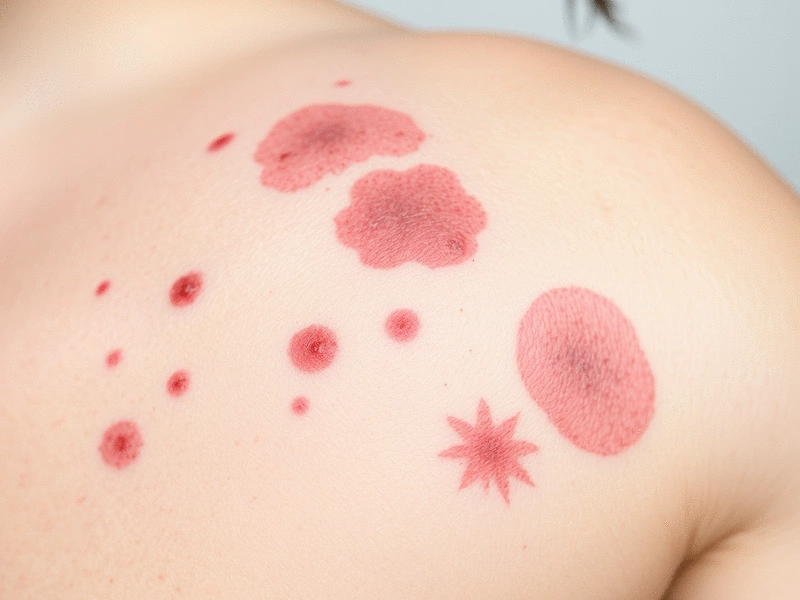
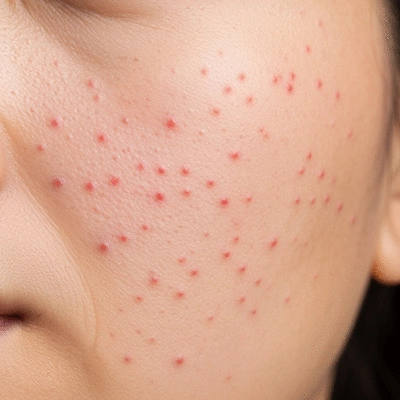

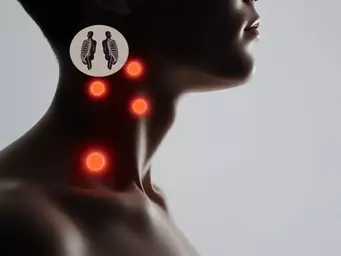 When it comes to navigating health concerns like leukemia, knowledge is your greatest ally. Understa
When it comes to navigating health concerns like leukemia, knowledge is your greatest ally. Understa
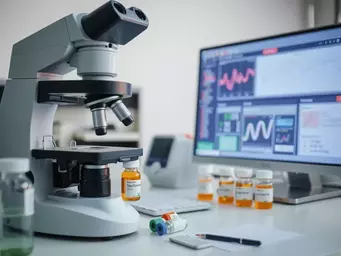 As we step into a new era of leukemia treatment, imagine the potential of groundbreaking therapies r
As we step into a new era of leukemia treatment, imagine the potential of groundbreaking therapies r
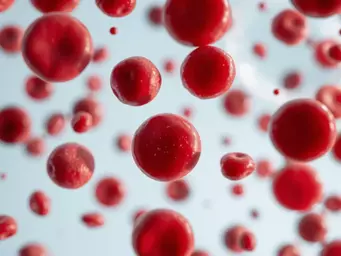 In the intricate world of blood cell functions, understanding their roles not only illuminates our b
In the intricate world of blood cell functions, understanding their roles not only illuminates our b
 What if the key to managing leukemia lies not just in conventional treatments, but in a holistic app
What if the key to managing leukemia lies not just in conventional treatments, but in a holistic app